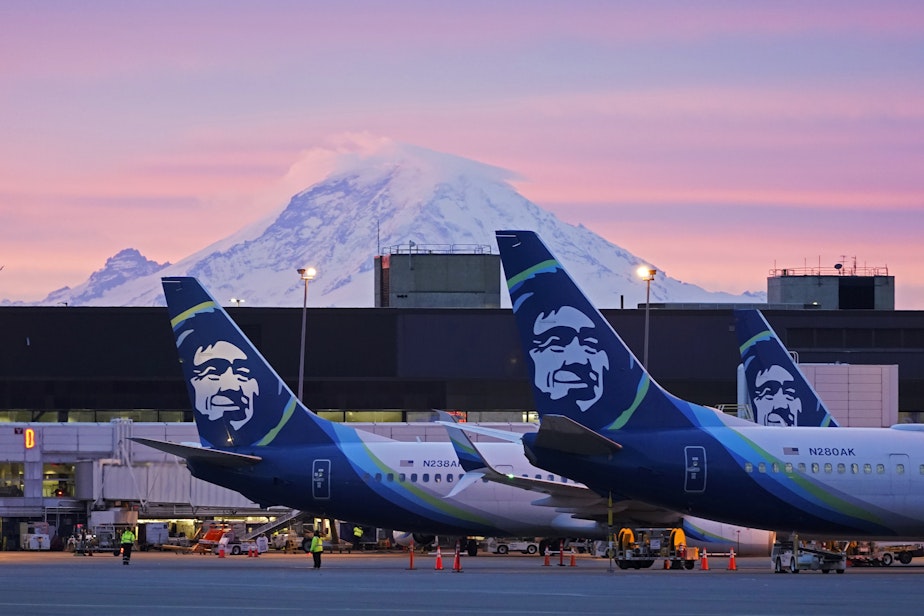After Alaska flight loses door plug at 16,000 feet, questions about Boeing Max planes linger

On Friday, 20 minutes after takeoff and at an elevation of 16,000 feet, a door plug on the side of Alaska Airlines Flight 1282 ripped off midair. As oxygen masks dropped from the ceiling, some of the 171 passengers took videos on their phones of the gaping hole in the side of the jet.
After quickly circling back to Portland, Oregon, the plane landed safely. Now all the attention is on what could have happened aboard that Boeing 737 Max 9.
The door plug patches a hole in the side of the plane left by what would have been an emergency exit on other planes. The particular seating configuration on this flight didn't necessitate an additional exit, which led to the use of a door plug. Spirit Aerosystems supplies Boeing with fuselages and door plugs for these particular configurations, and is working with the investigation into the accident.
The most critical piece of data for determining what went wrong was the door plug itself, which was ejected from the plane over Portland. A local schoolteacher found the door and turned it over to the National Transportation Safety Board, which is working in conjunction with Alaska Airlines to understand what went wrong aboard the flight.
"We know that a warning light indicating a pressurization issue on the plane had lit up three times before Friday," said Micah Maidenberg, who covers space and aviation safety at the Wall Street Journal. "Once in December, and a couple of times in the week before the accident."
The Federal Aviation Administration mandated that a number of Boeing Max 9s operated by Alaska and United Airlines be grounded for safety checks, which take 4-8 hours to inspect before being cleared to carry passengers.
The incident is just the latest in a series of issues with the Boeing 737 Max series, which includes the Max 8 and Max 9 models. Two high-profile crashes in 2018 and 2019 in Indonesia and Ethiopia, which killed over 340 people, grounded all 737 Max aircraft worldwide for an investigation into the maneuvering characteristics augmentation system (MCAS).
Sponsored
"Boeing has been trying to make changes and get better and improve on how it builds and certifies and engineers and these jets," Maidenberg said. "That recent history looms here a little bit — these appear to be very different situations, they're very different planes that obviously had very different outcomes."
Passengers on the recent Alaska Airlines flight suffered some injuries, but luckily, nobody was seated in the row next to the door plug, and nobody died.
As for employees, Boeing's CEO, Dave Calhoun, hosted a companywide meeting and webcast focused on safety from Boeing's Renton factory. Boeing and Spirit Aerosystems saw their stock drop significantly after the incident.
The National Transportation Safety Board is continuing its investigation into the Alaska Airlines incident and is continuing to check other MAX 9 models across the country for potential flaws.
Listen to the full Soundside conversation by clicking "play" on the audio icon above.
Sponsored
You can read Micah's coverage on the issue here.





